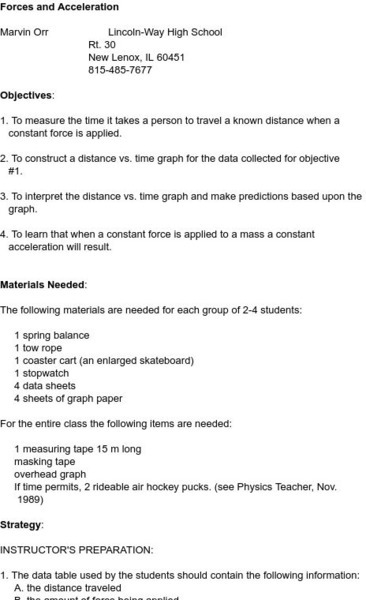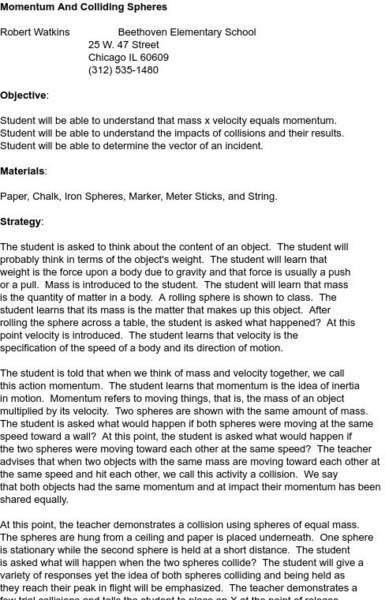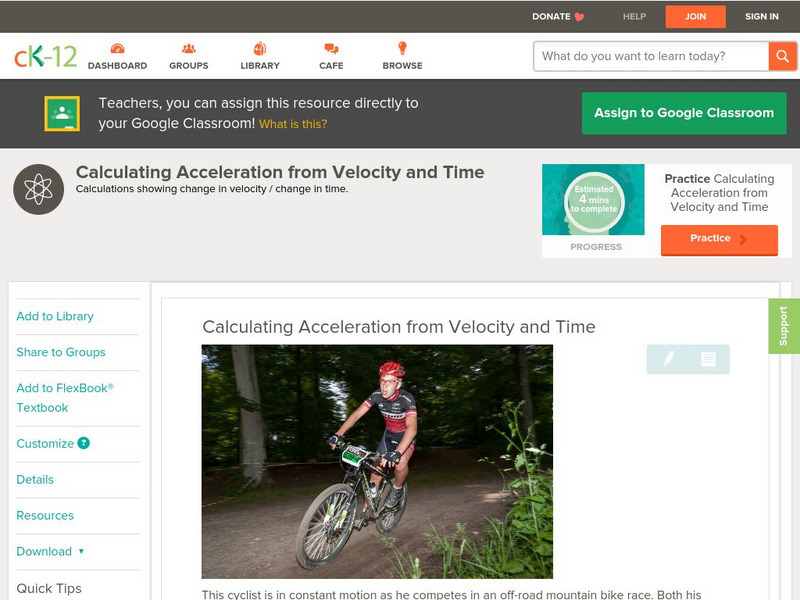Hi, what do you want to do?
Calculator Soup
Calculator Soup: Force Calculator
This calculator will find the missing variable in the physics equation for force (F = m * a), when two of the variables are known.
University of Maryland
Thinking Problems in Oscillations and Waves
A series of thought-provoking, multichoice questions from the University of Maryland on the topic of oscillations and waves. Equations for calculating the period of motion for masses on springs, pendulums, sounds, and waves on a string...
Khan Academy
Khan Academy: What Is Friction?
Learn about the force of friction on this reference page which defines why friction is important and how it can change physic problems.
Science and Mathematics Initiative for Learning Enhancement (SMILE)
Smile: Lab Work Forces & Acceleration
The Illinois Institute of Technology provides this site. The site contains a graphing activity which illustrates that a constant force exerted upon an object results in constant acceleration. Rolling carts and stopwatches are used to...
Science and Mathematics Initiative for Learning Enhancement (SMILE)
Smile: Colliding Spheres
This lab activity from the Illinois Institute of Technology lets students investigate the impact of collisions upon the velocity and momentum of the colliding objects. Requires understanding of vectors.
PBS
Pbs: Nova: Top Gun Over Moscow
An online exhibit investigating the sensations experienced by a cockpit pilot in a Russian aircraft. Focuses on G-forces and apparent weightlessness.
Sophia Learning
Sophia: Forces in a Rope & Pulley System: Lesson 2
This lesson explains what forces are acting on objects which are at rest or moving in a rope and pulley system. It is 2 of 2 in the series titled "Forces in a Rope & Pulley System."
Sophia Learning
Sophia: Free Body Diagram: Lesson 2
This lesson introduces the concept of the free-body diagram. It is 2 of 2 in the series titled "Free-Body Diagram."
CK-12 Foundation
Ck 12: Torque
[Free Registration/Login may be required to access all resource tools.] In this online lesson students will learn about Torque and how to calculate Torque in various situations.
Khan Academy
Khan Academy: What Is a Centripetal Force?
Learn what centripetal forces are and how to calculate them. Included are two problems with the solutions provided.
Khan Academy
Khan Academy: Conservation of Angular Momentum Review
Review how angular momentum is conserved if there is no external torque applied to a system. Specific scenarios are highlighted: system changing it rotational inertia, orbiting bodies, and rotational collisions.
Khan Academy
Khan Academy: Inelastic Collision Review
Review the key concepts and skills for inelastic collisions. Understand how to determine if a collision is elastic or inelastic.
Read Works
Read Works: The Science of Fun!
[Free Registration/Login Required] An informational text about the science behind circus acts. A question sheet is available to help students build skills in reading comprehension.
CK-12 Foundation
Ck 12: Phys. Science: Calculating Acceleration From Velocity and Time
[Free Registration/Login may be required to access all resource tools.] How to calculate average acceleration and the SI unit for acceleration.
Science and Mathematics Initiative for Learning Enhancement (SMILE)
Smile: Lab Activity: Aviation
This site from the Illinois Institute of Technology provides a student lab activity in which the flight of a paper airplane is investigated and studied. Designed for primary grades, but easily adaptable for junior high students.
Khan Academy
Khan Academy: Friction Review
Review the key concepts, equations, and skills for friction, including how to find the direction and magnitude of the friction force.
Khan Academy
Khan Academy: Angled Forces Review
A review page discussing how to break down forces into the horizontal and vertical components when force is at an angle.
Khan Academy
Khan Academy: Introduction to Forces and Free Body Diagrams Review
Review the key concepts and skills for forces, including how to draw free body diagrams.
Khan Academy
Khan Academy: What Is Tension?
What is tension? How do you calculate tension? This site will review over how ropes pull on things and how to handle that kind of force.
Khan Academy
Khan Academy: What Is Normal Force?
If you have ever run into a solid wall, you have experienced the pain of a normal force. This webpage reviews over the force exerted when two objects touch.
Khan Academy
Khan Academy: What Are Inclines?
A webpage with equations and examples of how to solve inclined planes problems. Learn how to deal with slopes when surfaces usually aren't perfectly horizontal.

























